Recent studies described in the Social Psychological and Personality Science journal noted that after experiencing disillusionment, both liberals and conservatives became more “extreme political activism.”[1] As the American Dream’s fading has resulted in growing disillusionment amongst all different socioeconomic segments, Americans have become more susceptible to political polarization. Undoubtedly, the media has helped widen the growing political division in the US. Mass media has often been linked with influencing political opinions, promoting particular perspectives, and showing some form of political bias. These factors may have led many Americans to consume an unhealthy media diet, limiting their consumption in a left- or right-leaning audience bubble and living in echo chambers.[2] Partisan polarization shows through the viewership demographics of various news outlets; Americans are increasingly “divided by party in the sources they turn to for political news.”[3] The media consumption division is also no longer just confined to traditional news sources. With Americans’ trust in mainstream media decreasing in the past decades, many have turned to alternative media, sources that can often embrace more blatantly biased perspectives and share unverified information.[4] To capture this increasing polarization of media, I have decided to document the divisions found amongst liberal and conservative news sources, both traditional and non-traditional. Diving into some of the sources along the partisan spectrum revealed some interesting contrasts.
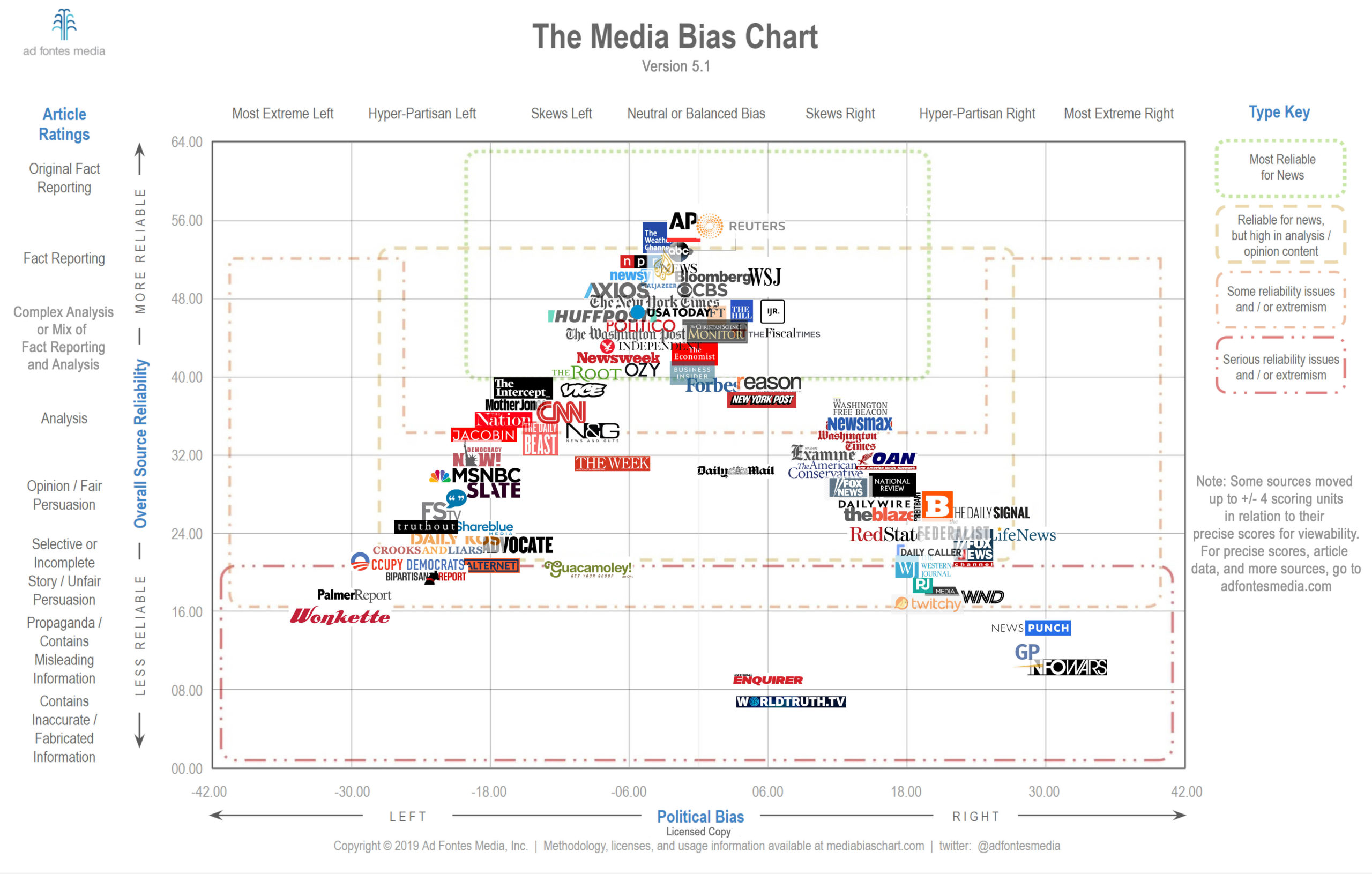
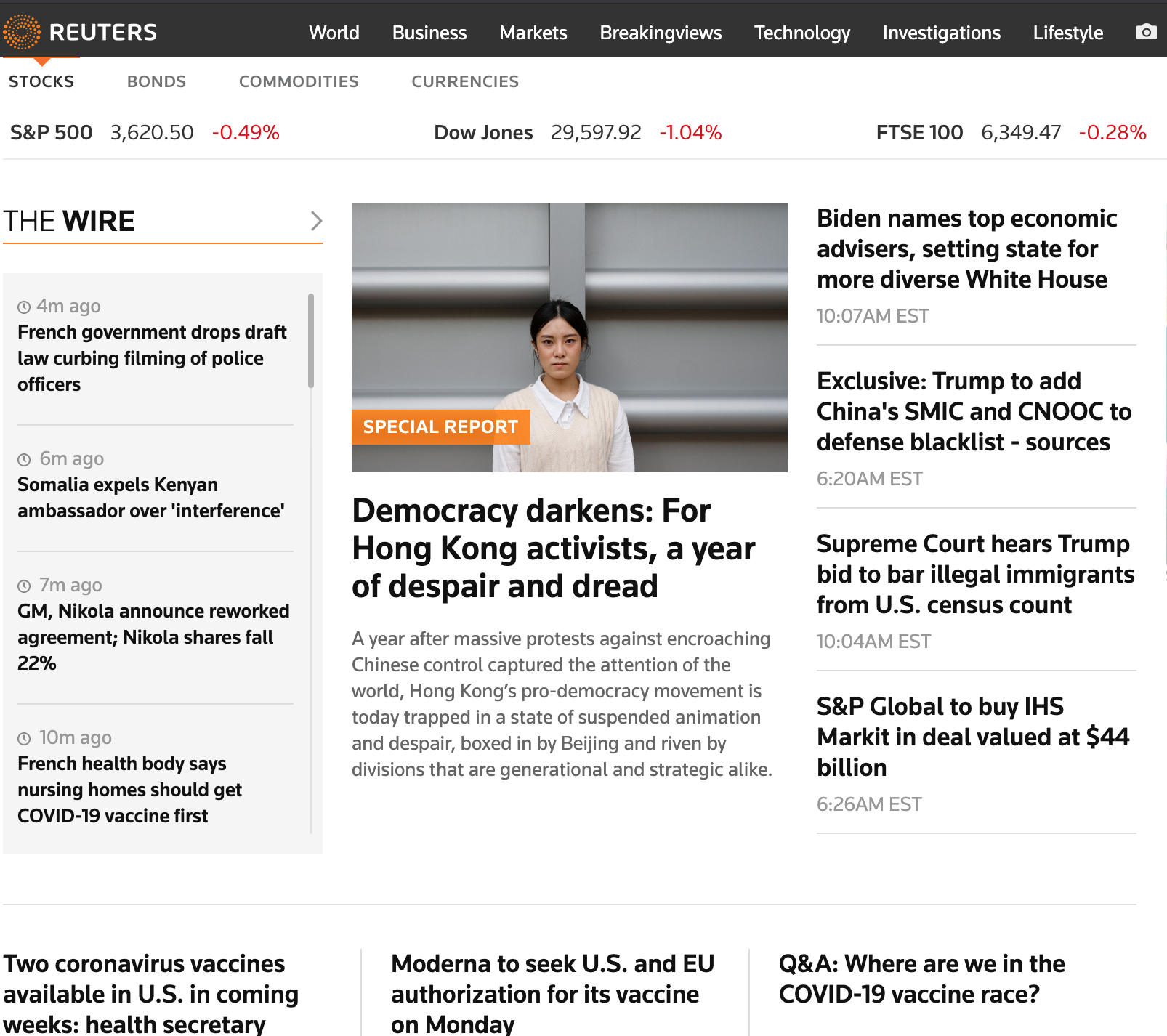
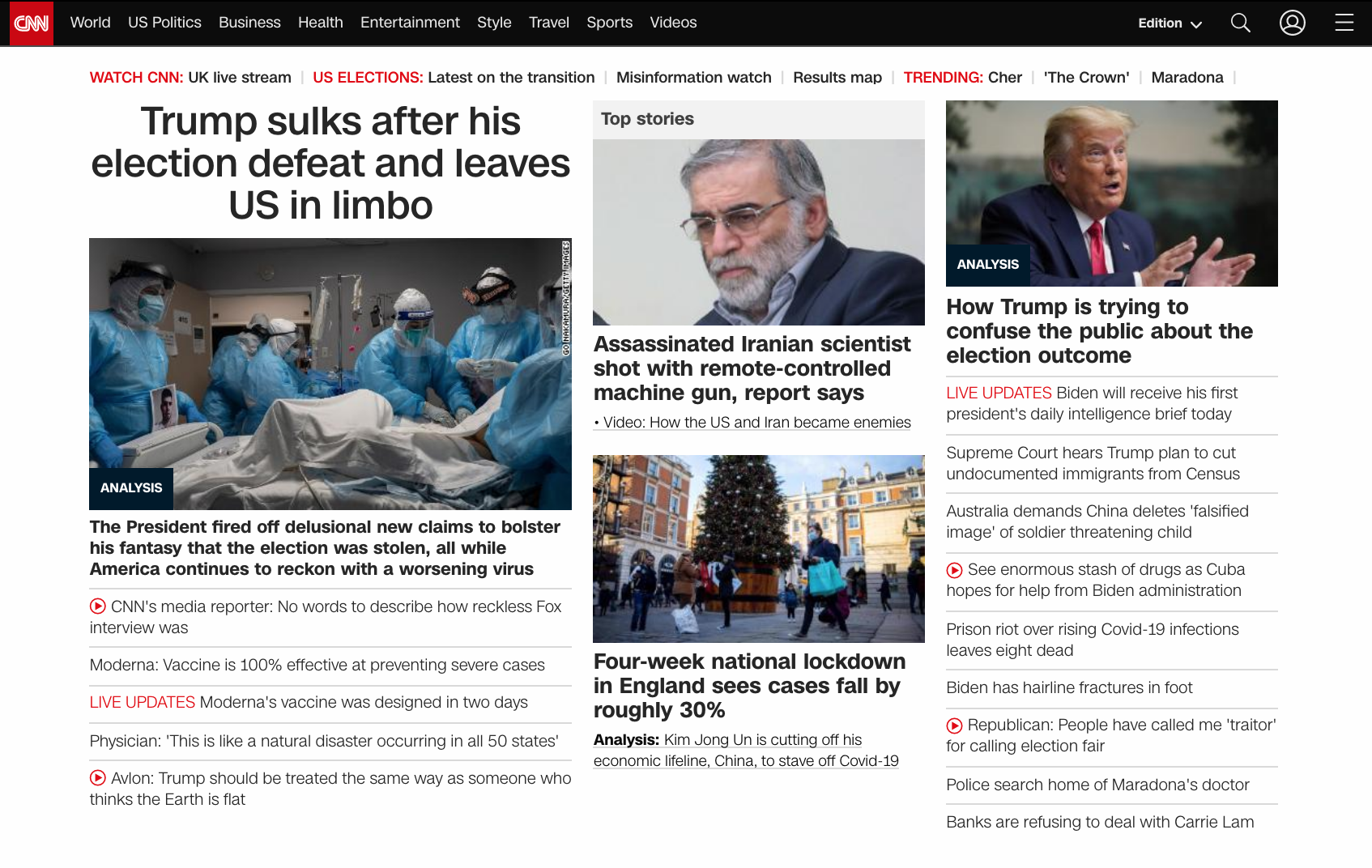
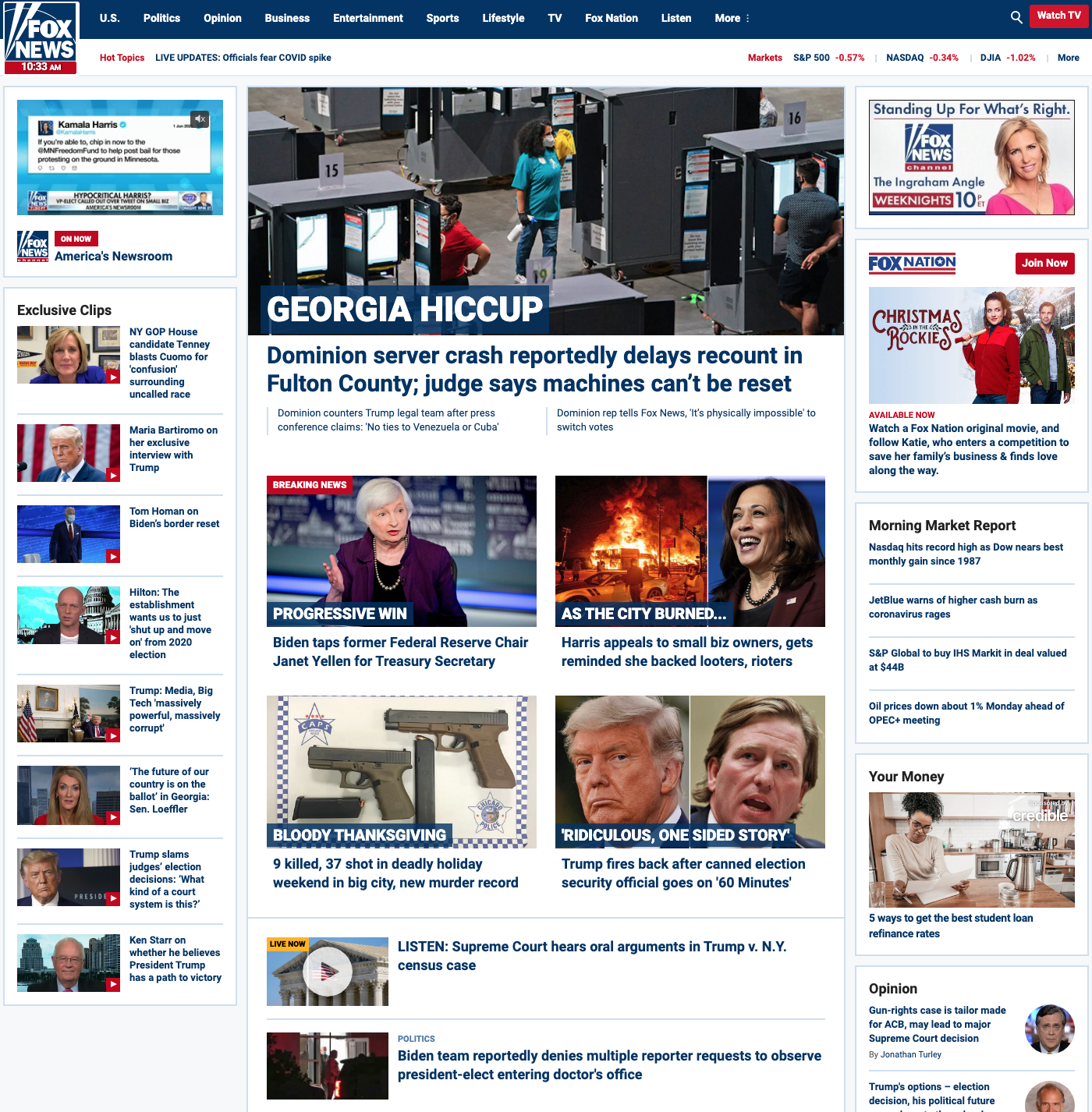
For the partisan comparisons, the Reuters pages serve as a non-partisan baseline. Although Ad Fontes does not label CNN and Fox News as hyper-partisan equivalents, comparing the two media giants’ websites felt appropriate. According to surveys done by Economist/YouGov and the non-partisan think tank, Pew Research Center, most Republicans watch and trust Fox News as their primary mainstream media source.[5][6] Republicans also overwhelmingly indicated CNN as the least trustworthy news organization. In turn, a large percentage of Democrats also showed high distrust in Fox News, but the surveys noted that Democrats tended to follow a wider variety of mainstream media organizations. The juxtaposition between the CNN and Fox News screenshots indicate potential sources of this distrust.
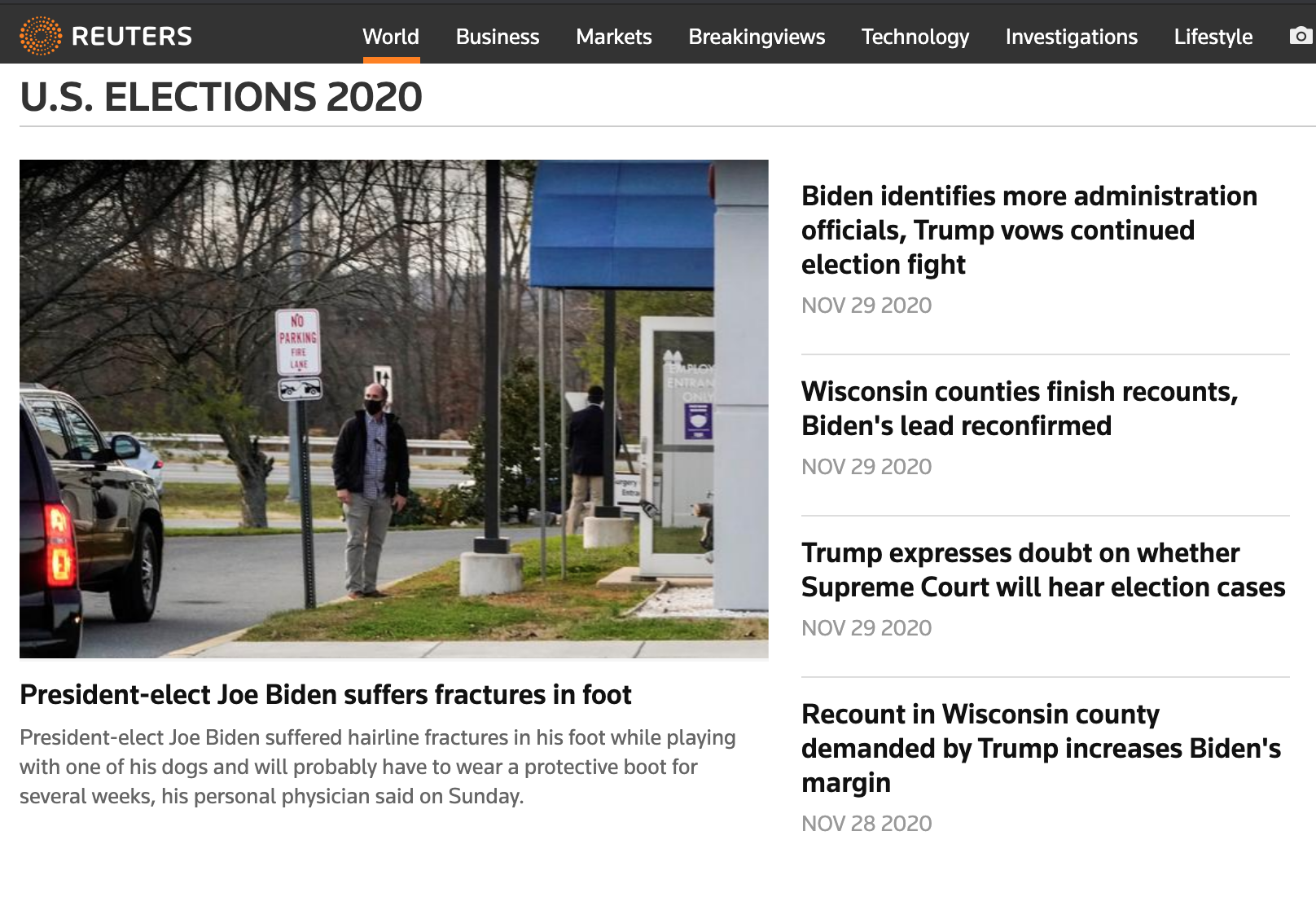
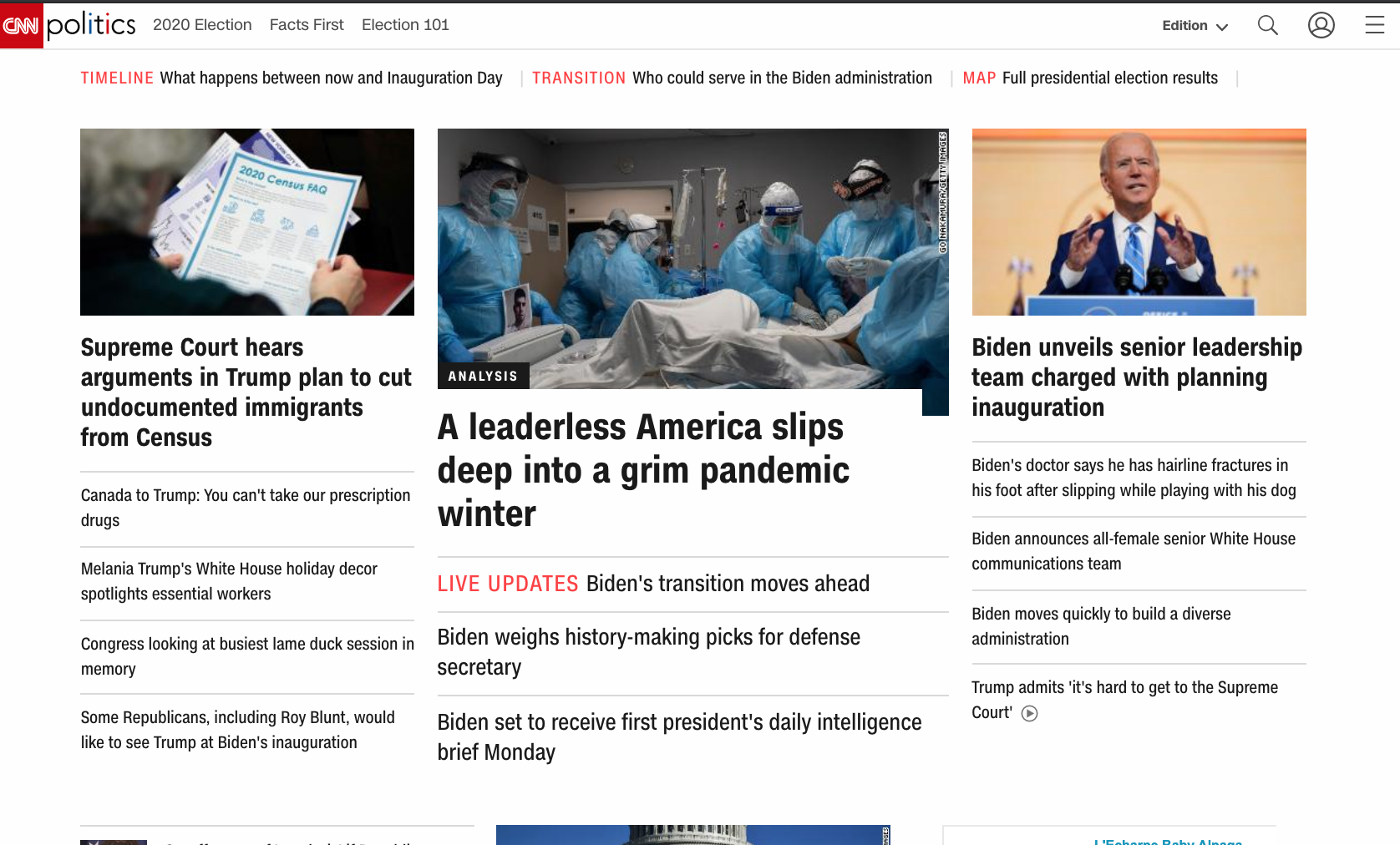
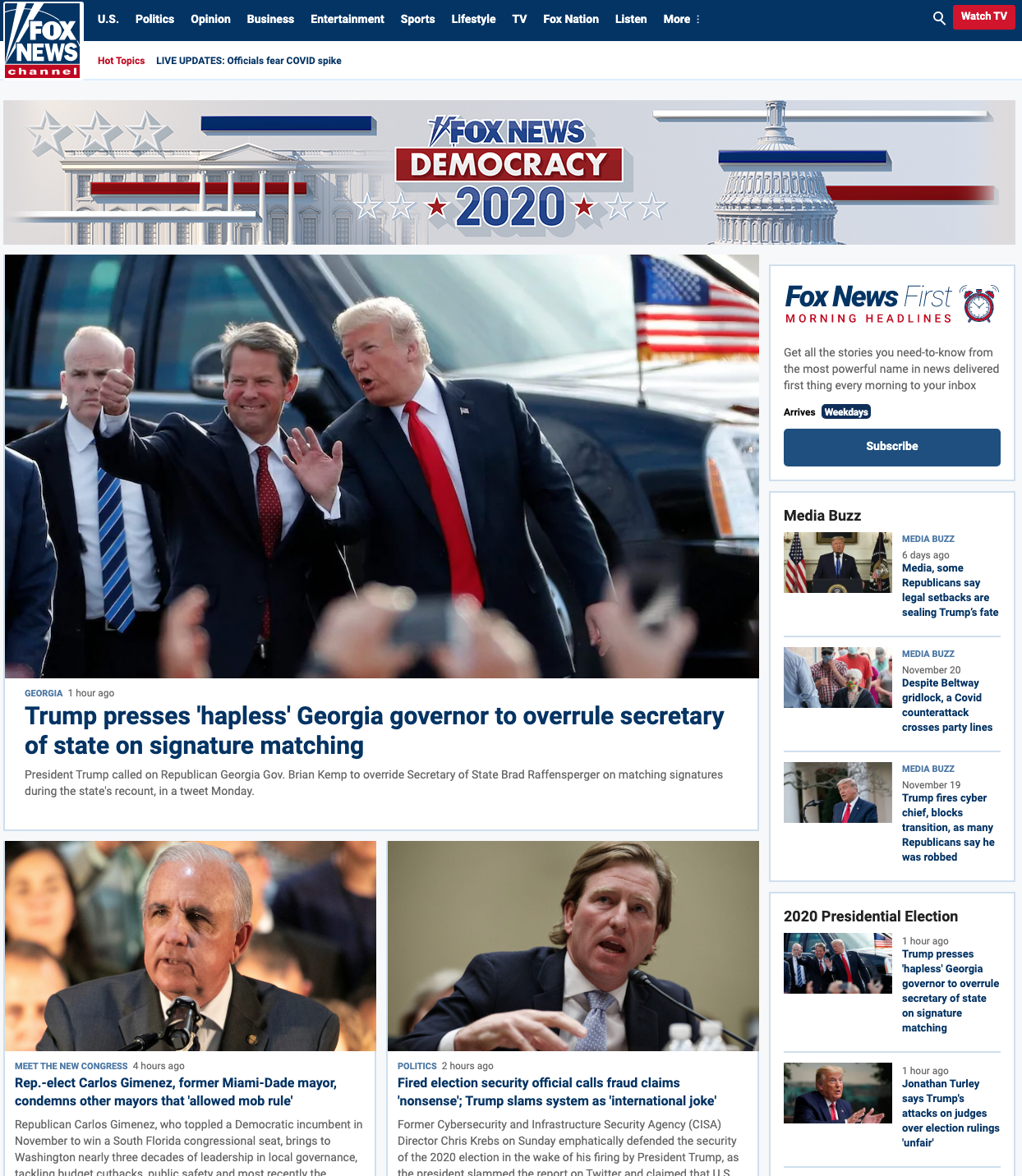
Looking at the front pages from both sites reveals each organization’s different priorities; some content on one site is noticeably absent on the other. While CNN focuses more on the pandemic, Trump’s leadership, and Biden’s upcoming presidency, Fox News prioritizes election fraud. Each site also throws jabs at their “opposing” party’s leadership, Fox News criticizing Kamala Harris and CNN attacking Donald Trump. Although the Reuters pages present a very neutral tone, the hyper-partisan sites’ language and style seem much more nuanced.

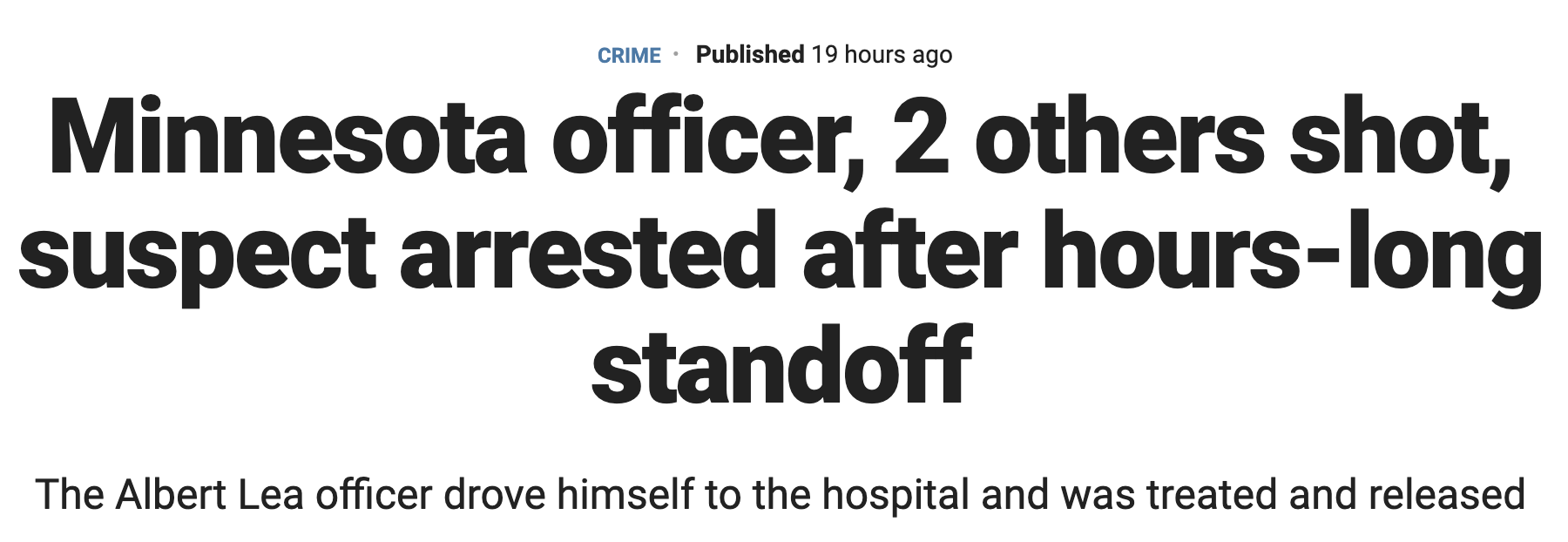
The Minnesota shooting (Figures 8 & 9) also shows a slight but noticeable difference. The Fox News headline highlights the shooting injuries, whereas CNN leaves a blurrier headline by only mentioning the ambush aspect. Overall, differences in coverage indicate how an echo chamber of sources could lead to greater political polarization.
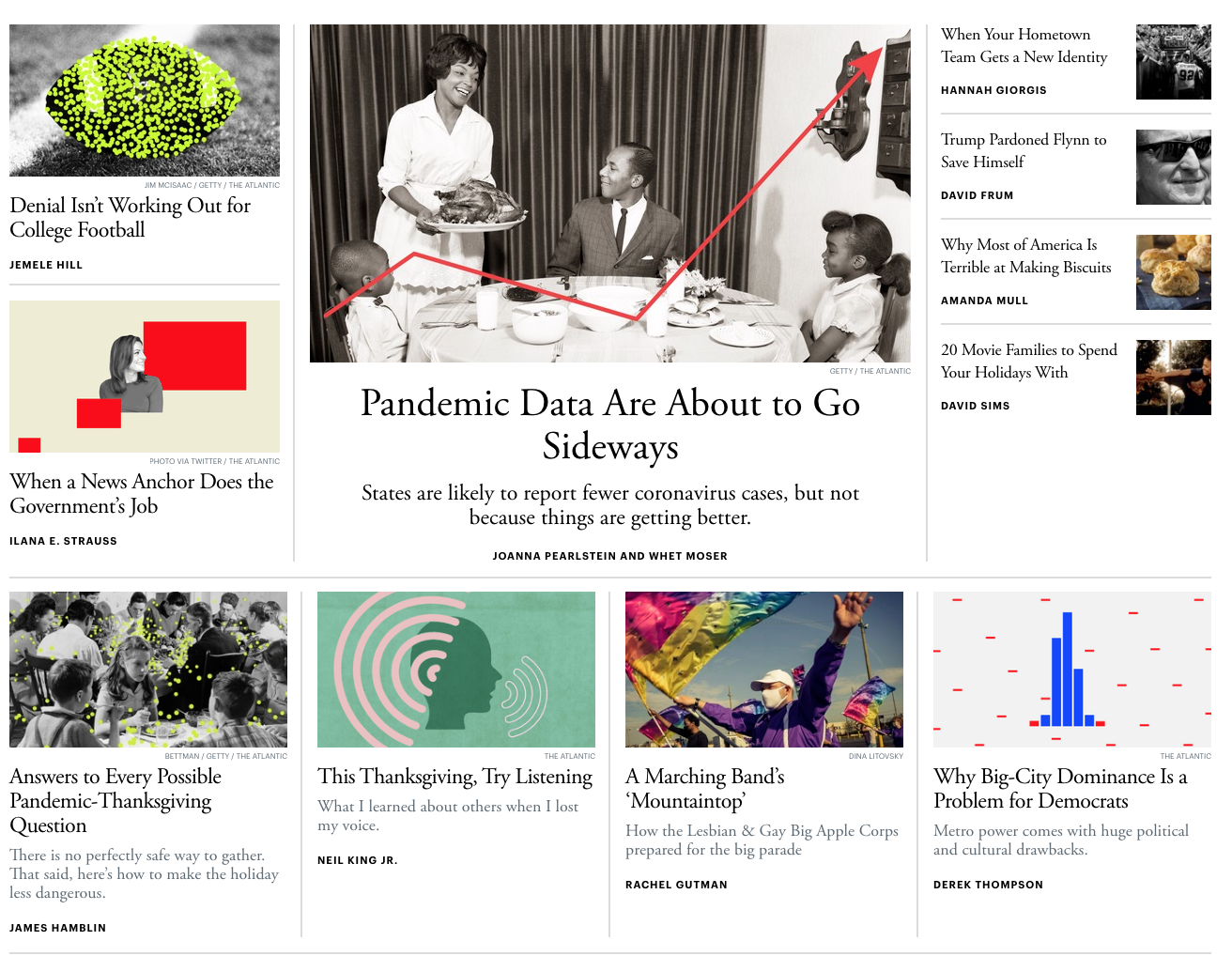
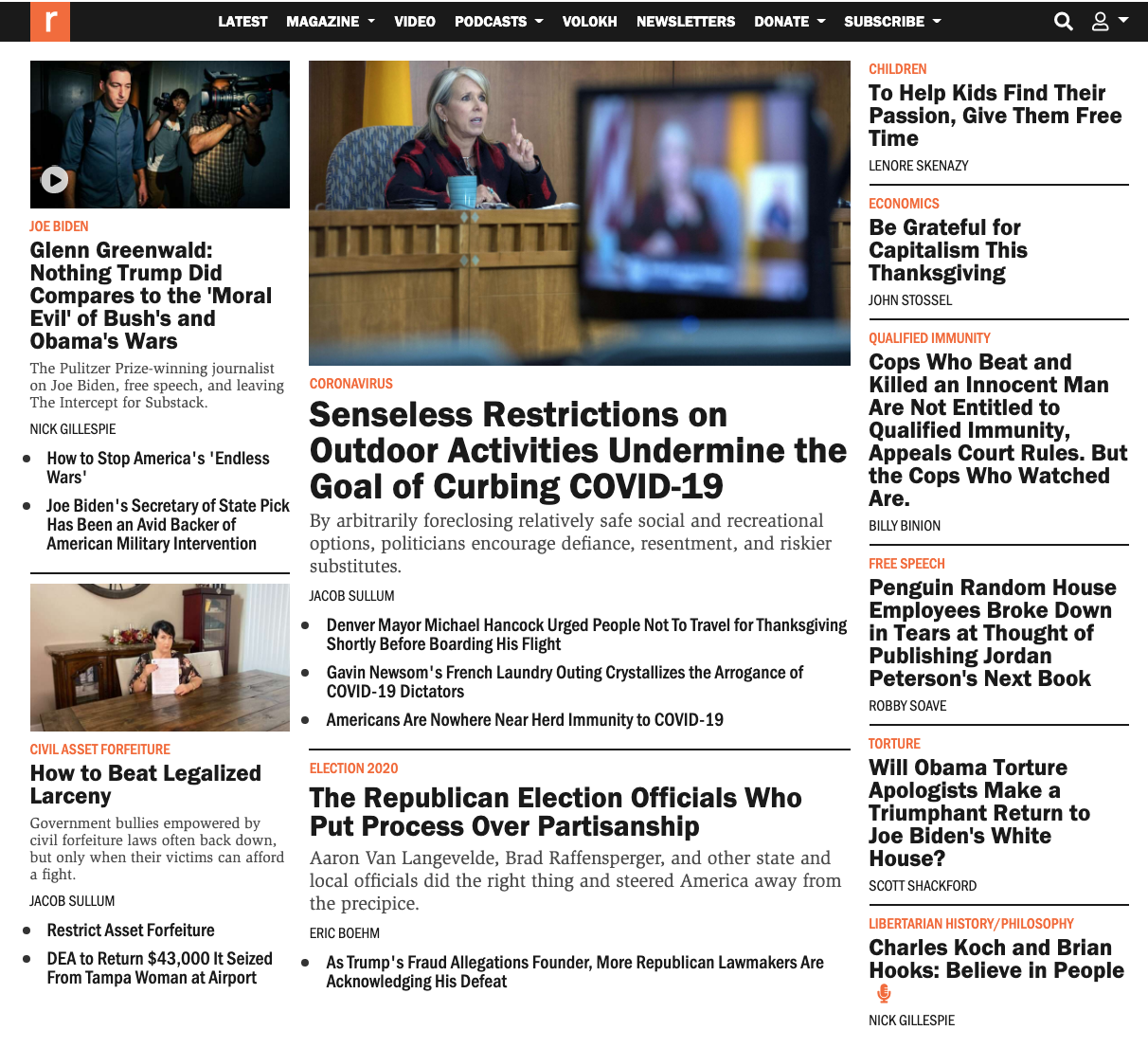
The Atlantic and Reason are mainstream monthly magazines which occupy nearly opposite positions on the Media Bias Chart. Unlike CNN and Fox News, Ad Fontes labels both with only a slight partisan leaning bias. The overall content found on the sites appears a lot less inflammatory than the information presented by the hyper-partisan sites. Granted, the screenshots are from Thanksgiving, but the language speaks for itself. However, partisan bias is still evident on both sites. The Reason front page reveals a conservative perspective with articles capturing Democratic party officials’ misconduct. In contrast, the Atlantic front page shows liberal bias with a striking opinion article indirectly criticizing Trump. Although these magazines do not overtly display bias, they show how even “reliable” sources may further help polarize a country. Subtle bias can still influence opinions.
Political alternative media sites tend to show their bias more openly than mainstream media organizations. While there are many alternative media sources, these screenshots focus on four major partisan sites.
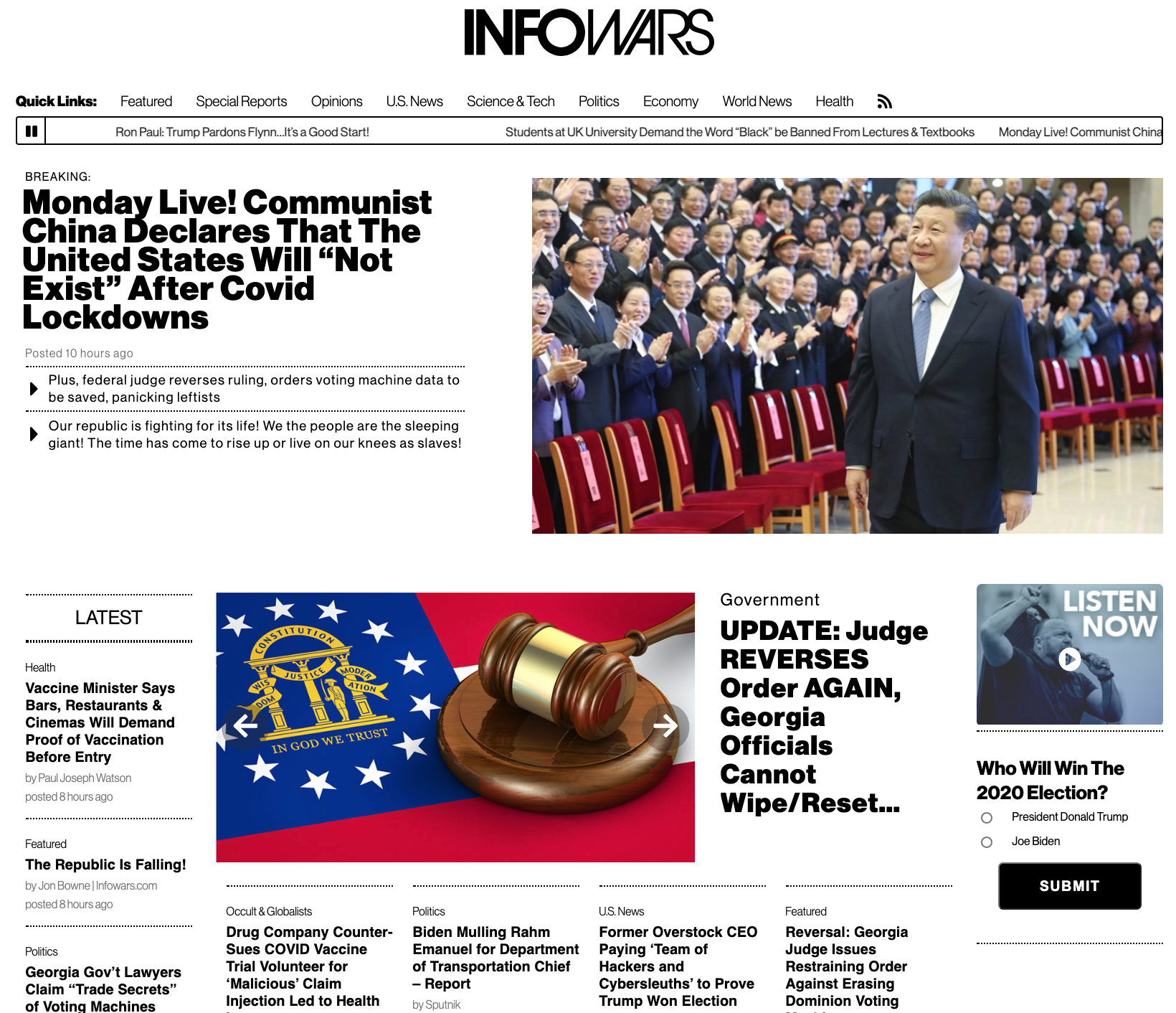
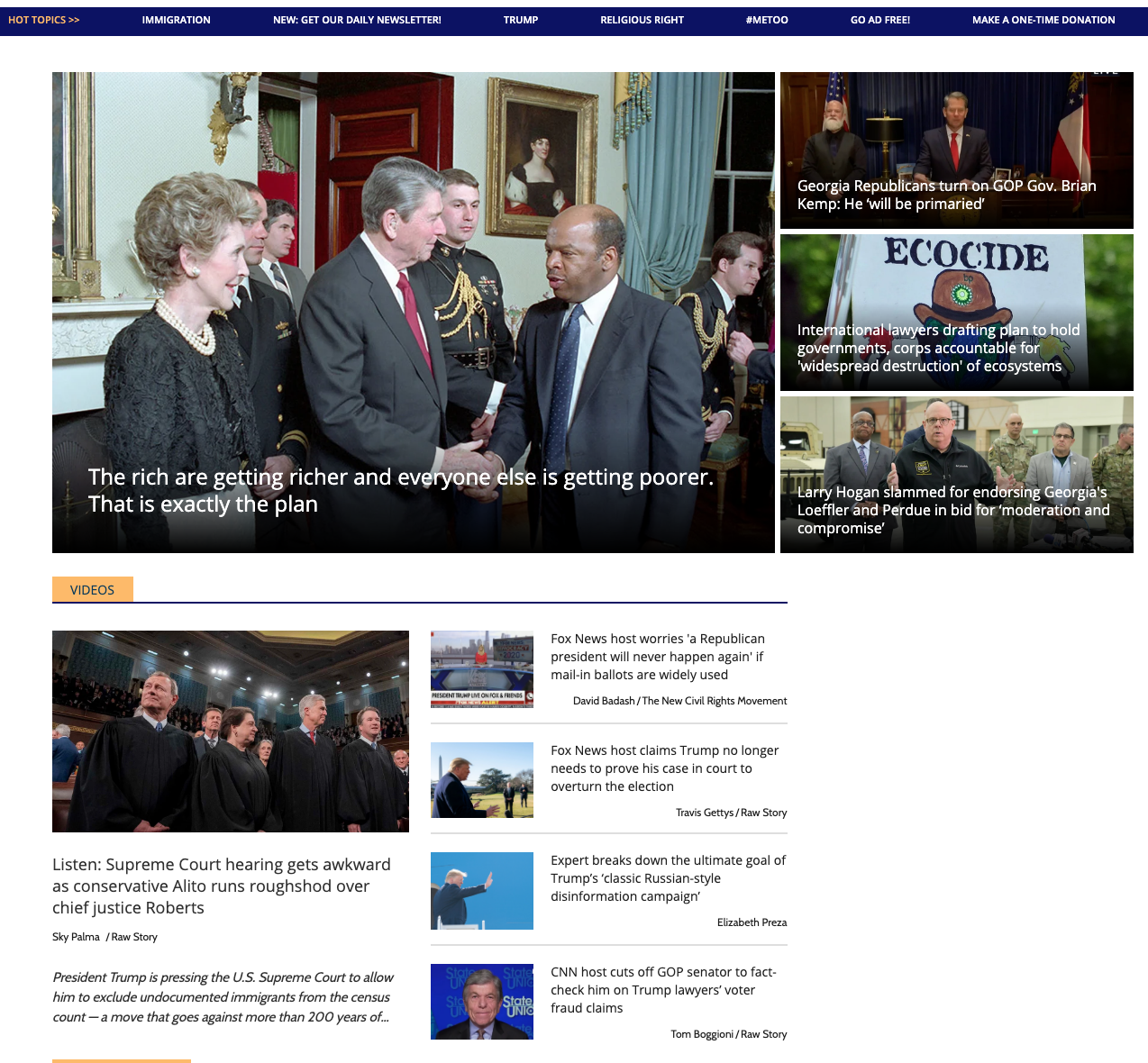
While CounterPunch and AlterNet are political opposites of Breitbart and InfoWars, the two groups are not real equivalents. The latter two have a massive following with an average of 70 million and 10 million monthly site visitors, whereas the former two sites average 1 million and 4.5 million monthly site visitors.[7] Although these numbers pale from Fox News website’s average of 350 million monthly visitors, the large audience base for these alternative media sites indicates a shift away from mainstream media.

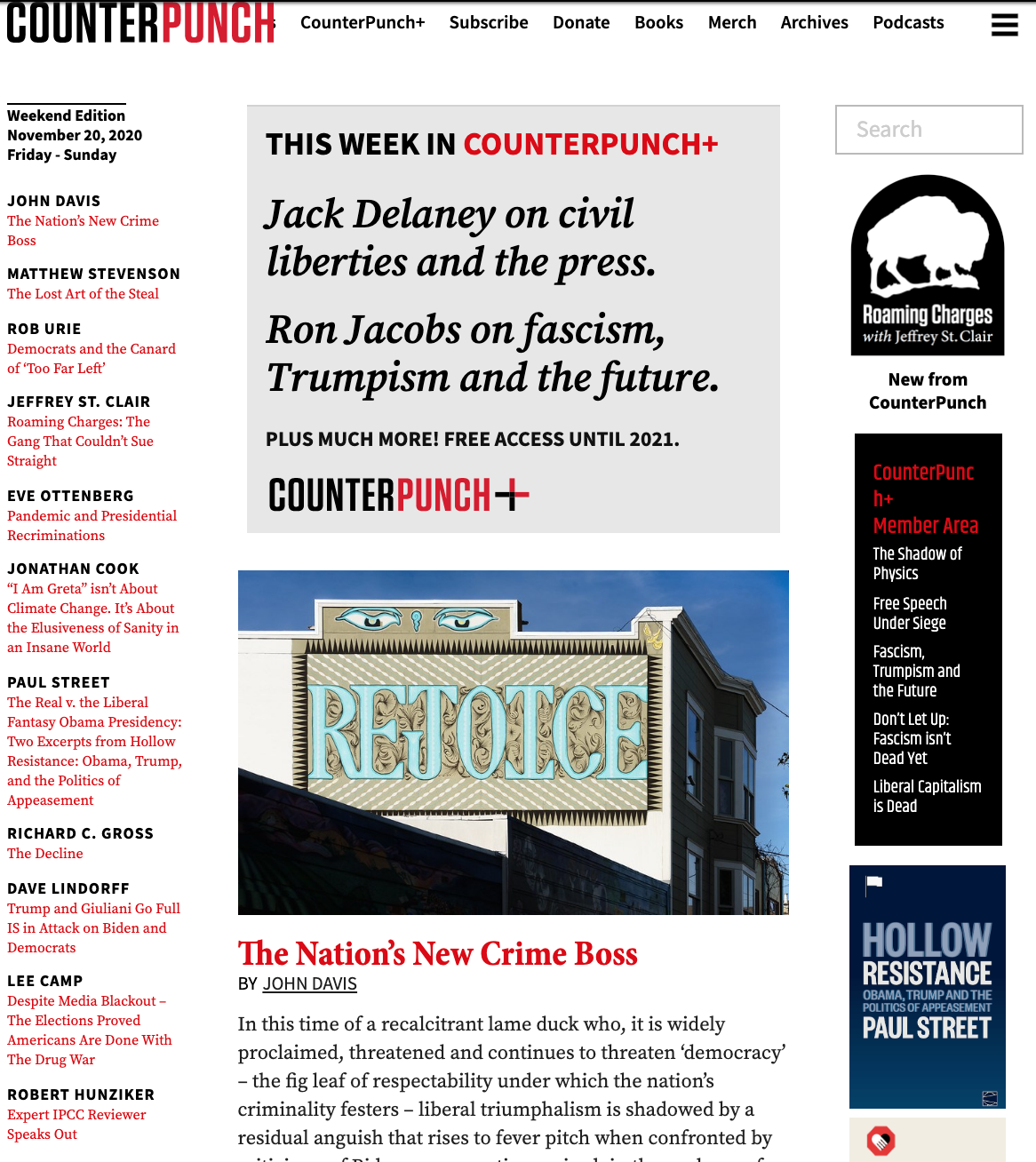
However, these sites feed into the deepening political polarization in the U.S. Looking at the front pages of the selected alternative media reveals blatant bias and inflammatory language. Unlike mainstream media sites, these sites directly cater to their audience bases by sharing content that engages their emotions and focusing on opinion pieces rather than unfiltered news. A byproduct of targeting emotions and catering to a specific audience is the spread of misinformation. Media Bias Fact Check has labeled InfoWars as an unreliable site that shares conspiracy theories and extremist views.[8]
While the screenshots from both traditional and alternative media sources only capture a minuscule amount of content, the varying presentation of news and display of bias shows the disparity in media consumed by Americans. As more Americans enter media echo chambers, they further confirm their inherent biases and become cut off from a healthy variety of news. This could lead to deeper political polarization within the country, especially as the pandemic’s economic effects and the growing wealth inequality cements the feeling of disillusionment amongst the general population and creates a powder keg of discontent, ready to explode.
Works Cited:
Infowars-Alex Jones. (2020). Media Bias Fact Check. Retrieved from: https://mediabiasfactcheck.com/infowars-alex-jones/
Jacobs, Tom. (2018). How Feeling Disillusioned Leads to Political Polarization. Greater Good Magazine. The Greater Good Science Center at the University of California, Berkeley. Retrieved from: https://greatergood.berkeley.edu/article/item/how_feeling_disillusioned_leads_to_political_polarization
Pew Research Center. (2020 January). U.S. Media Polarization and the 2020 Election: A Nation Divided. Retrieved from:
Sanders, Linley. (2020 June). The difference between which news outlets Republicans and Democrats trust. YouGov PLC. Retrieved from: https://today.yougov.com/topics/media/articles-reports/2020/06/18/trust-news-republican-democrat-poll
SimilarWeb. (November 2020). Retrieved from: https://www.similarweb.com/
Swift, Art. (2016 September). Americans’ Trust in Mass Media Sinks to New Low. Gallup, Inc. Retrieved from: https://news.gallup.com/poll/195542/americans-trust-mass-media-sinks-new-low.aspx
[1] Jacobs, Tom, “How Feeling Disillusioned Leads to Political Polarization,” Greater Good Magazine. The Greater Good Science Center at the University of California, Berkeley. https://greatergood.berkeley.edu/article/item/how_feeling_disillusioned_leads_to_political_polarization
[2] “U.S. Media Polarization and the 2020 Election: A Nation Divided.” Pew Research Center. https://www.journalism.org/2020/01/24/u-s-media-polarization-and-the-2020-election-a-nation-divided/
[3] “Americans are divided by party in the sources they turn to for political news” Pew Research Center. https://www.journalism.org/2020/01/24/americans-are-divided-by-party-in-the-sources-they-turn-to-for-political-news/
[4] Swift, Art, “Americans’ Trust in Mass Media Sinks to New Low.” Gallup, Inc. https://news.gallup.com/poll/195542/americans-trust-mass-media-sinks-new-low.aspx
[5] Sanders, Linley, “The difference between which news outlets Republicans and Democrats trust.” YouGov PLC. https://today.yougov.com/topics/media/articles-reports/2020/06/18/trust-news-republican-democrat-poll
[6] “U.S. Media Polarization and the 2020 Election: A Nation Divided.” Pew Research Center. https://www.journalism.org/2020/01/24/u-s-media-polarization-and-the-2020-election-a-nation-divided/
[7] SimilarWeb. https://www.similarweb.com/
[8]“Infowars-Alex Jones.” Media Bias Fact Check. https://mediabiasfactcheck.com/infowars-alex-jones/
